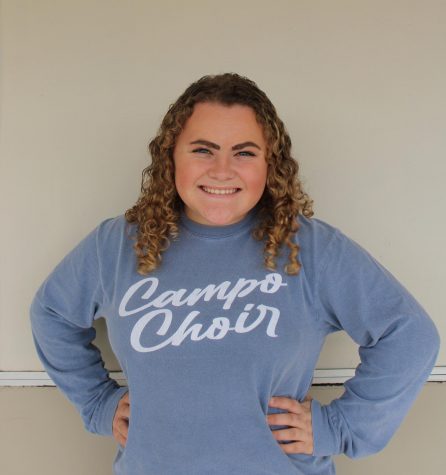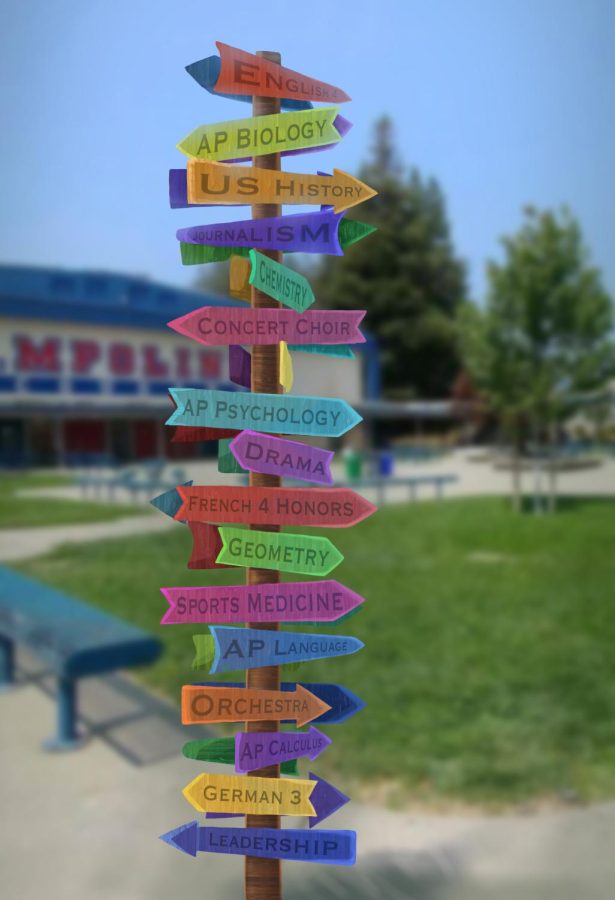More Support Needed with Course Selections
Students have difficulty choosing which courses are best for them.
Every year Campolindo students are faced with what many teachers would call the most important decision they will make at Campo: course selections. With so many options available, it’s no wonder that many students feel overwhelmed about these important decisions. Not only do your course selections prepare you for college, but they can also steer you towards possible careers in life.
Considering how important these choices are for your education, students need more support in making them. For incoming sophomores, the options for Advanced Placement (AP) classes are limited. Taking an AP class comes with a large responsibility that students need to be made aware of. In frosh World History classes, students had the opportunity to listen to 2 students who either took AP Art History or AP European History explain their opinions on the respective courses. While this may seem helpful in deciding if these classes are interesting, these students didn’t explain what the classes are really about, focusing instead on convincing us that the class “is fun!” or “the teachers are great!”
Students need more guidance in these decisions. While meeting with the school counselors can help, the counselors can’t tell you what a certain course will involve, as they don’t teach it. Teachers should be the ones helping to guide students through this choice, since they are the ones actually teaching these classes and providing the material.
Freshman Madeline Martindale agreed that more guidance is needed for course selections especially for underclassmen: “[Underclassmen] probably don’t know as much about the classes [offered] as upperclassmen would since they just joined the school. They probably don’t know that much about electives since it wasn’t taught to us in earlier years of our schooling.”
A simple solution to this is implementing an Academy period dedicated to explaining course selections to students. Teachers could create a collaborative slideshow that explains what students will learn in each class and the workload students should expect. This slideshow could be displayed a week or 2 before course selections are due to the counseling office, where all students would stay for the academy so that they have ample time to make these important decisions. Martindale agreed that a slideshow presentation would be beneficial and said, “It would be nice if the teacher of that class [made a slideshow] definitely. Even if it’s just 1 period, we could still learn [a lot]. If [students] could access the slideshow too that would also be really helpful.”
Many students have turned to their counselors during this time of difficult decision-making for the next year. While the counselors do their best to help students make informed decisions, there are only 4 of them for a school of over 1300 students. Understandably, they are not the experts on specifics for every course. Martindale said she feels unsure about her class selections and didn’t receive enough guidance: “Even after I went to my counselor and tried talking about it, she decided that I only needed 5 minutes, and said that I [should] come back another day and she’ll help me with it.” This unhelpful guidance was undoubtedly given to many students, and is virtually useless in helping students make these decisions. By providing a slideshow with information cultivated by teachers of all the course options, students will be much more prepared.
Ensuring that students are informed about the classes they select would result in fewer schedule changes for counselors at the beginning of the year and overall happier students who feel prepared for the year and their futures.
Your donation will support the student journalists of Campolindo High School's The Claw. Your contribution will allow us to produce more issues and cover our annual website hosting costs.

When she was 4 years old, Claire Birdsey was enrolled in her first dance class and has been hooked ever since. Dancing at CAPA in Moraga since 2017, she...

Makayla Erickson, a senior at Campolindo, enjoys participating in the Campo Choir. From a young age she was fond of performing, but realized her passion...


